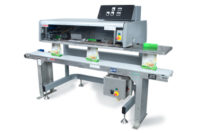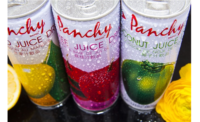The brilliance, the brand color and, of course, the printing process wouldn’t be possible today without the combination of inks and pigments. The packaging and quality we see today has vastly changed over the past 20 years. We can find foods and everyday goods in packaging only dreamed of in the past.
Pigments and ink are instrumental in selling the product. The products being sold contain high-end labels, pouches, wrappers, or flexible packaging that displays and grabs the attention of the consumer.
The main components of an ink are pigment, resin and carriers. Each component in the final ink formulation contributes to its ability to be printed and meet the end-use performance expectations.
Pigments used in printing inks are classified as organic and inorganic. Inorganic pigments are derived from a natural or mineral source. Most of the common printing inks today use organic, engineered pigments. Organic pigments typically yield a cleaner, brighter color and are stronger in developed color strength. The pigment selection in inks has many factors. For example, a select range of pigments are able to be formulated for retort packaging. The selection of the appropriate pigments is important for the heat, bleed and migratory specifications required.
In liquid inks, the pigments used are in dry toner or press cake form. Dry toners are used in solvent and water borne printing inks. Typically the press cake contains 50-70 percent water, which makes it easier to formulate it into water borne formulations.
The dispersion or milling of pigment into an ink formulation consists of several different factors and processes. The end result is similar for most. This consists of breaking down the agglomerates, achieving optimum particle size, development of color strength and required conditions of transparency/opacity required.
Development of an ink has many factors that need to be addressed. The close communication with customers is the key for success. Many conditions that need to be considered such as heat resistance, fade resistance, freeze thaw, substrate, adhesive types, press conditions, and product end-use are all factors that determine the ink formulation. Inks can be composed of many types of resins, polyamides, urethanes, acrylics, and nitrocellulose, and all have distinct characteristics specialized for a specific ink type and product end-use. Without knowing the complete end-use requirements of the job could jeopardize the outcome of the final package.
Common additives used in ink formulations can consist of waxes, defoamers, cross linkers, glycols, amines, plasticizers, and surfactants. All have a specific purpose that controls how the pigment and final ink formulation will print on press.
Effect pigments such as pearlescent bring a different appearance to packaging. When formulated with transparent inks or coatings, the light reflects between the particles leaving a pearl effect. The particle size and ink film thickness can change the color and appearance when observing the print.
Metal particles of aluminum and copper/bronze when formulated into inks give a brilliant metallic finish to products. The properties and appearance of the finish can depend on the grade of choice. The most common are leafing and non-leafing metallics.
We are seeing a growing trend in functional inks and pigments such as thermal chromatic products, which let the consumer know if a product is at its optimum temperature or not. These pigment inks shift in color or start out as transparent and shift to a predetermined color by the formulator. Cold and hot temperature thermal chromatic inks are actively adding a new element in printing.
The technology in inks, pigments and printing has rapidly evolved in the past several years, allowing the industry to formulate and print advanced products such as conductive films using common printing practices. Solar cells are a prime example of how today’s printing technology is evolving.
The advancement made in printing equipment and press room efficiencies have demanded higher press speeds which changed the ink development and testing processes. New generations of printing inks developed with the collaboration of raw material suppliers have shown successes in the ability to increase printed pounds throughput in converting facilities.
New technologies are the focus to help customers print and develop new products. For instance, one of these is a new water-base ink for lithium-ion battery cathodes. The development group has seen an increased life cycle in part to its unique binder system. Today’s electronics are able to use smaller batteries based on these new printed technologies.
The ink and printing industry will continue to advance with new and sophisticated flexible packaging. The development of new and innovative technologies, increased production and higher levels of consistency will allow our industry to expand into new areas.
Toyo Ink
(866) 969-8696
www.tia.toyoink.com






